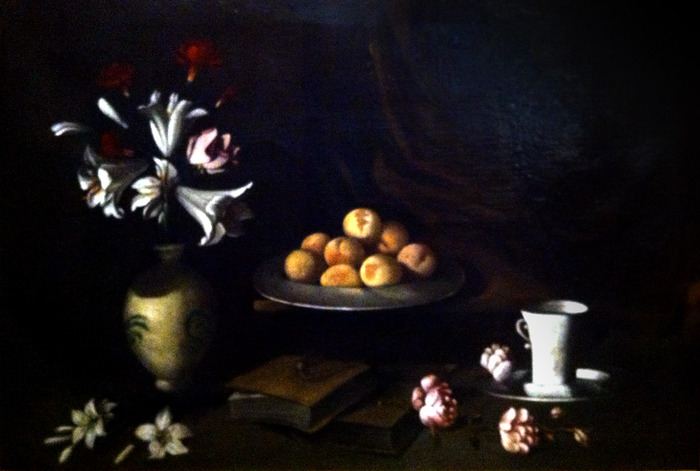Tavern

Technical details
Description
The Still Life with a Vase and Flowers, also with a pewter plate with peaches, two books, a cup with water, roses and a rosary, is a Spanish still life from the start of the Baroque period, possibly by either Francisco de Zurbaran during his early period in Llerena, ca. 1625, or by the enigmatic still life painter Juan Fernández, known as "El Labrador" (the farm labourer), native of the village of Jaraicejo in the province of Cáceres, who may have trained under Zurbaran before specialising in still life painting. Two of the objects appearing in this still life would be repeated by these artists in other works. The cup with water and the rose on a pewter plate was a motif painted by Zurbaran in 1626 on the table of the work Miraculous Healing of the Blessed Reginald of Orleans, which was part of a series on the life of Saint Dominic for the convent of San Pablo in Seville, and later in two other paintings in ca. 1633. The vase with white lilies, roses and red carnations was repeated with much higher quality by Juan Fernández “El Labrador” in the still life painting that was previously attributed to Zurbaran, housed at the Prado Museum and dated 1635-1626. If Fernández had trained under Zurbaran in Llerena, he may have painted this still life in about 1626-1629, copying the glass motif from his master. Therefore, this still life is of as much interest for its iconography and symbolism as it is for the uncertain identity of its creator, one who moved in the artistic circles of a young Zurbaran. Beyond the Tenebrist-style Naturalism with which the objects are depicted, this still life is charged with religious symbolism, from the white cup with water, representing the purity of the Virgin Mary, who is also known as the "Rosa Mystica" (Mystical Rose), to the vase of flowers, with the white lilies of virginal purity, red carnations for the Passion of Christ, the closed devotional books and the rosary that finishes with the Crucifix hanging next to the curtains, which also allude to the Passion and Death of Christ.


